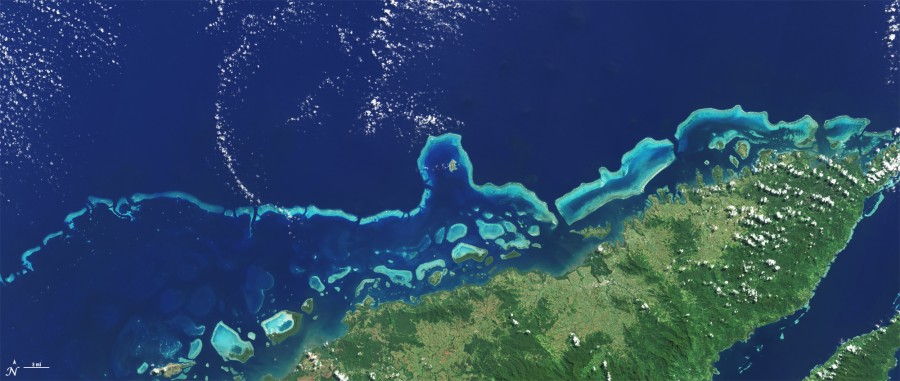NASA is spreading its interest to the underwater world as the agency we typically associate with outer space begins a three-year NASA CORAL field expedition gets underway this year to survey more of the world’s coral reefs.
The NASA-led study will use advanced instruments on airplanes and in the water to survey more of our reefs in far greater detail than ever before. Dubbed CORAL — the COral Reef Airborne Laboratory — will aim to develop a database of “uniform scale and quality”.
In the past, most all reef measurent studies have been relegated to expensive, labor-intensive diving expeditions. In fact, many reefs have never been surveyed, and those that have been studied are typically measured at only a few dive sites.
“Right now, the state of the art for collecting coral reef data is scuba diving with a tape measure,” said Eric Hochberg, CORAL principal investigator and scientist at the Bermuda Institute of Ocean Sciences, St. George’s. “It’s analogous to looking at a few trees and then trying to say what the forest is doing.”
Hochberg and his team of researchers are set to survey entire reef systems in Florida, Hawaii, Palau, the Mariana Islands and Australia. NASA will be using an airborne instrument called the Portable Remote Imaging Spectrometer (PRISM) that was developed at NASA’s Jet Propulsion Laboratory in Pasadena, Calif.
According to NASA JPL, PRISM records the spectra of light reflected upward from the ocean below, allowing researchers to determine the unique spectral signatures of living corals and algae. Algae tends to increase on reefs as corals are lost to bleaching and other factors, so the ratio of coral to algae can be an indicator of the ecosystem’s health.
“Now, estimates of global reef status are synthesized from local surveys with disparate aims, methods and quality,” said Michelle Gierach, the CORAL project scientist at JPL. “With CORAL, we will provide not only the most extensive picture to date of the condition of a large portion of the world’s coral reefs, but a uniform dataset, as well.”
Also the team will plan on taking measurements in the water to validate the detail and information they receive from the airborne measurements. This will allow the CORAL team to analyze reef conditions in the context of the prevailing environment, including physical, chemical and human factors to reveal how the environment shapes reef ecosystems.
“We know reefs are in trouble,” Hochberg said. “We’ve seen the reefs of Jamaica and Florida deteriorate and we think we know what is happening there. However, reefs respond in complex ways to environmental stresses such as sea level change, rising ocean temperatures and pollution. The available data were not collected at the appropriate spatial scale and density to allow us to develop an overarching, quantitative model that describes why and how reefs change in response to environmental changes. We need accurate data across many whole reef ecosystems to do that.”
Although significantly more of the world’s reefs will be studied vs. traditional methods, its stunning to think that this program will only cover 3-4% of the world’s reefs.
[via Phys.org]



